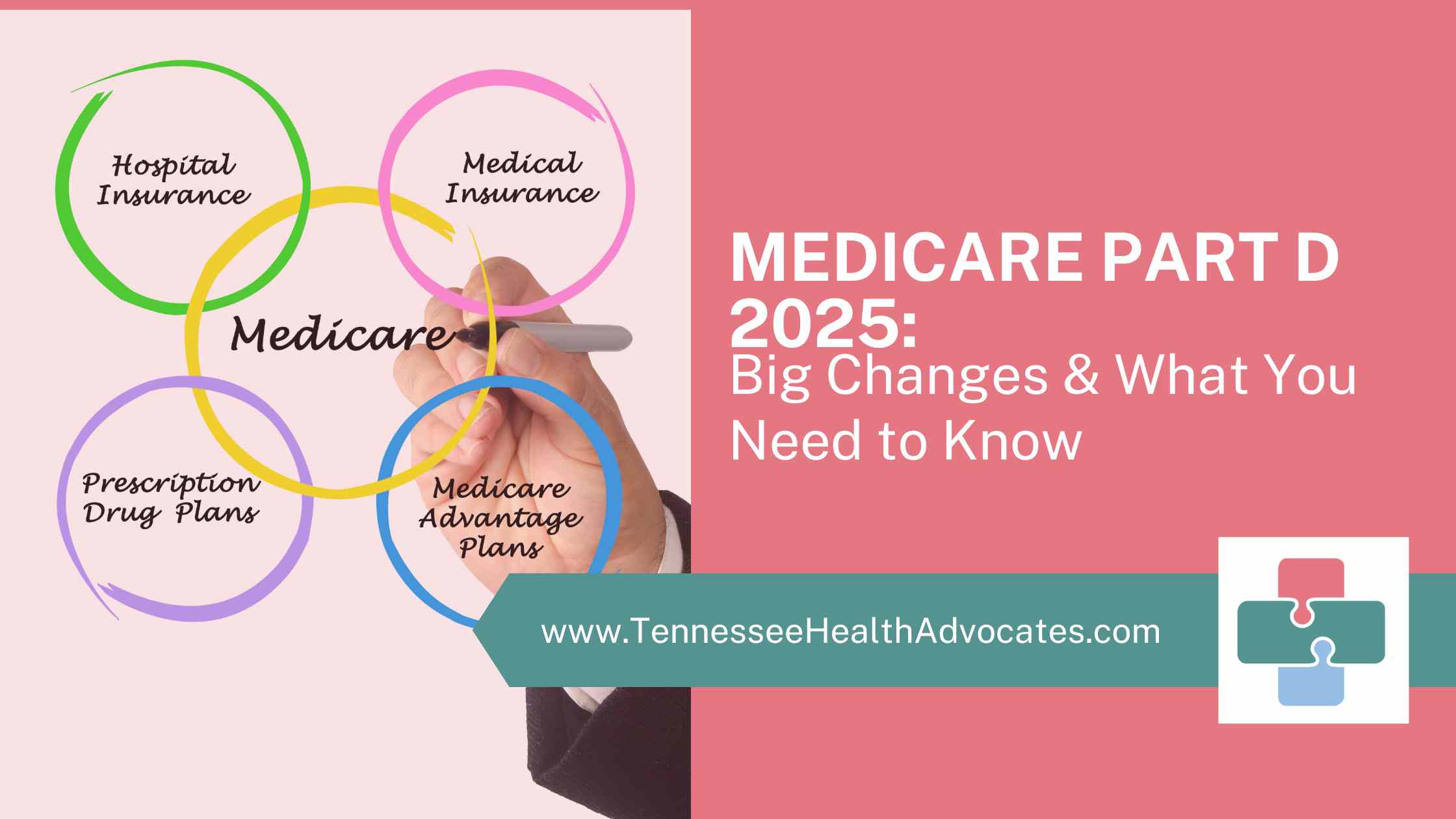Navigating Medicare Changes for Better Prescription Coverage
The Medicare annual enrollment period is quickly approaching. Understanding the latest updates is crucial for beneficiaries to make informed decisions about their 2025 coverage. Last week my friend Jan Stone, a respected board-certified patient advocate and Medicare broker, joined me to shed light on how these updates will impact Medicare Part D and prescription drug coverage next year.
Medicare Part D, which covers prescription drugs, is about to undergo some major changes in 2025 due to the Inflation Reduction Act (IRA). These updates are designed to help beneficiaries save money on medications and make prescription costs more predictable. Here are the top things you need to know about these changes.
Overview of Annual Enrollment
Medicare annual enrollment starts on October 15 and ends on December 7 each year. During this period, beneficiaries have the opportunity to make several changes to their plans:
-
- Switch from one Medicare Advantage plan to another.
-
- Change from one Medicare drug plan to another.
-
- Move from a Medicare supplement plan to a Medicare Advantage plan.
**Given the complexities involved, particularly when switching back from a Medicare Advantage plan to a Medicare supplement plan, consulting a knowledgeable broker becomes vital.**
Introducing the Inflation Reduction Act
Passed in 2022, the Inflation Reduction Act aims to address many of the financial challenges faced by Medicare beneficiaries, especially in terms of their prescription drug costs. This legislation introduces several key changes to Medicare Part D.
Key Changes in Medicare Part D Drug Plans
Up until now, Medicare drug plans have often left patients grappling with high out-of-pocket costs after paying their deductibles and copays. However, starting in 2024, significant changes will be implemented, designed to ease this burden:
-
- Uniform Deductible:
A new standardized deductible of $590 is set for all plans. The application of this deductible may vary based on the drugs in question, often sparing generic drugs from this cost.
- Uniform Deductible:
-
- Out-of-Pocket Spending Cap:
One of the biggest and most important changes coming in 2025 is the introduction of an out-of-pocket cap. This means that Medicare Part D will limit how much you must spend on prescription drugs each year. Starting in 2025, once you’ve spent $2,000 out of your own pocket on medications, Medicare will cover 100% of your drug costs for the rest of the year.
- Out-of-Pocket Spending Cap:
-
- Medicare Prescription Payment Plan:
Also starting in 2025, if you reach that $2,000 out-of-pocket limit but don’t want to pay it all at once, you can choose the new Medicare Prescription Payment Plan. This plan allows you to spread out your medication costs evenly over the year, making it easier to manage your budget. This option gives Medicare beneficiaries more flexibility when paying for their prescriptions. Learn more about this new payment option from the Centers for Medicare & Medicaid Services.
- Medicare Prescription Payment Plan:
What Does All This Mean for You?
For those on high-cost medications, the new cap on out-of-pocket expenses provides significant relief. Patients like those taking Eliquis, who could previously spend up to $7,000 annually, will see their total spending capped at $2,000, potentially saving them thousands of dollars.
Additionally, while premiums fluctuate, the overall costs for beneficiaries on expensive medications should decrease. For example, a plan with a higher monthly premium may still result in lower overall spending when combined with the $2,000 cap.
These updates to Medicare Part D are meant to reduce costs and make things more predictable when it comes to paying for your medications. If you’re someone who takes a lot of medications or very expensive ones, the $2,000 cap will offer significant relief. You’ll also have more options for spreading out your payments throughout the year.
How You Can Prepare
To make sure you get the most out of these changes, here are a few tips:
-
- Check Your Plan Each Year: During Medicare’s open enrollment period, use the Medicare Plan Finder tool on Medicare.gov to compare plans. Make sure your current plan still meets your needs and take advantage of any new benefits.
-
- Ask for Help: If you’re not sure what to do, contact your local State Health Insurance Assistance Program (SHIP). They can help you compare plans and figure out what works best for you.
-
- Explore Extra Help: If you think you might qualify for the Extra Help program, visit ssa.gov/ExtraHelp to apply. Even if you didn’t qualify before, the expanded eligibility rules might mean you can get help now.
-
- Stay Informed: These changes are part of a larger plan that will continue to roll out over the next few years. Stay informed by visiting websites like the PAN Foundation (panfoundation.org/reforms) or Medicare Advocacy.
Value of Consulting a Broker
Navigating these changes alone can be daunting. Consulting a well-versed broker can be invaluable. A skilled broker will analyze your medication list, including drug names, dosages, frequency, and preferred pharmacies. This thorough analysis helps you identify the most cost-effective plan tailored to your specific needs, taking into account variable costs at different pharmacies and under different plans.
Conclusion
The changes to Medicare Part D in 2025, brought on by the Inflation Reduction Act, are designed to make prescription drugs more affordable and predictable for Medicare beneficiaries. Whether it’s the $2,000 out-of-pocket cap, the option to spread payments out over time, or the expansion of financial help through the Extra Help program, these reforms could significantly lower your medication costs.
Don’t wait until 2025 to start planning—check your coverage now, apply for any help you might be eligible for, and talk to your healthcare provider about what these changes mean for you. Understanding your Medicare options can help you take control of your healthcare and save money on prescription drugs.
Final Thoughts:
I hope this information has provided you with a general understanding of the important changes to Medicare Part D in 2025. If you’ve found this information valuable, check out Navigating the No Surprises Act: A Guide for Advocates & Patients. All of my posts are crafted to empower you on your healthcare advocacy journey. Explore and absorb the wisdom shared, and let it fuel your aspirations.
If you are an Independent Patient Advocate and want to be the first to get new information and support as an independent patient advocate, join me in The Circle where we meet LIVE on Zoom every week!



